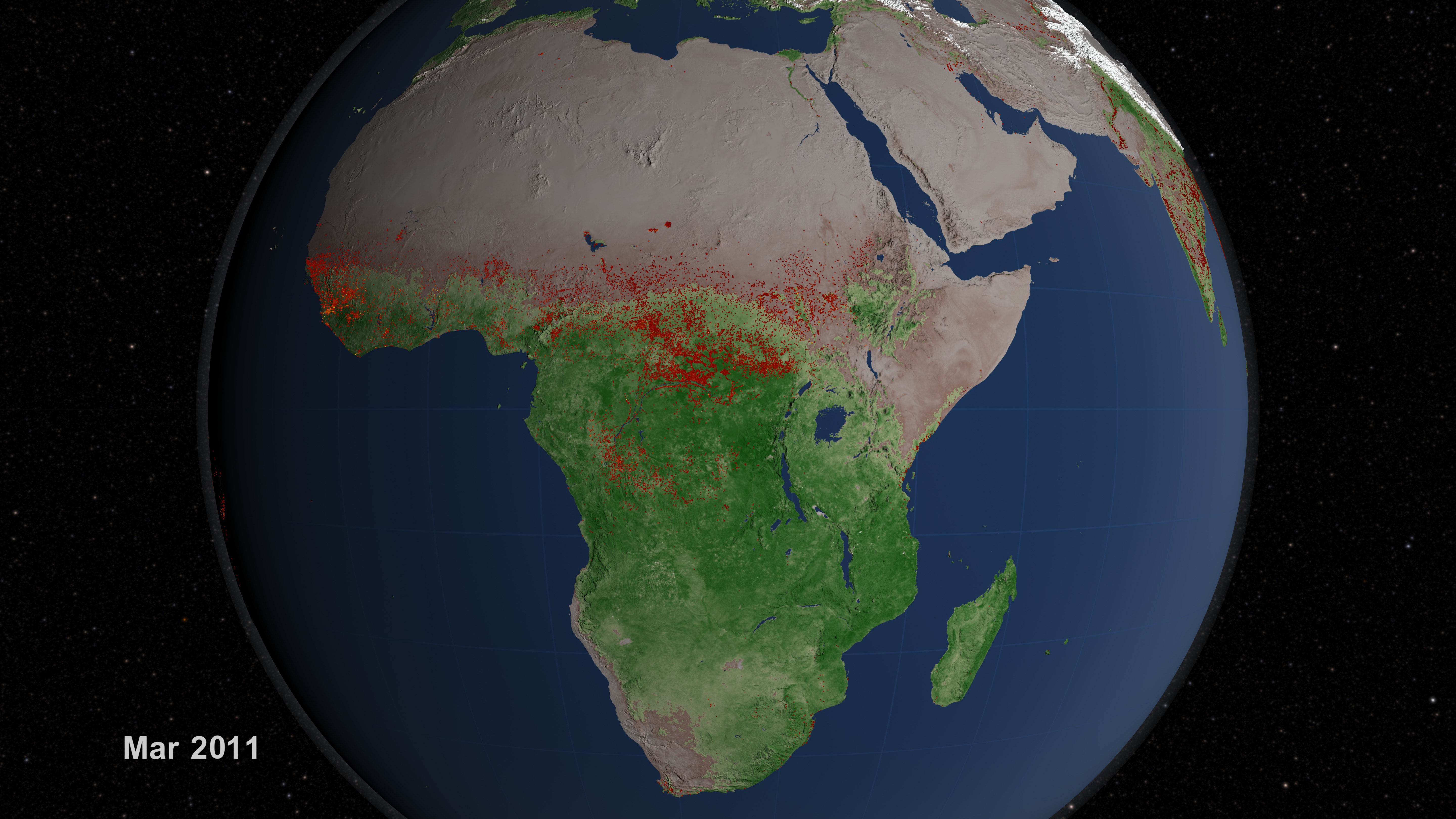The Fire Continent
More fires burn in Africa each year than any other place on Earth. Collectively, these fires account for 70 percent of the total area burned by fire around the world. Humans set the majority of fires in Africa, burning land for farming and pastoral grazing. The practice is widespread and accepted by Africa's fire management community. Fire clears excess vegetation, creates new areas for cultivation and returns nutrients to the soils. Lightning fires, though not entirely uncommon, contribute much less to the total burning across the African landscape. At the beginning of the wet season, dry vegetation can readily ignite when struck by lightning. Such spontaneous ignitions can lead to wildfires that burn for days. The visualization below shows nearly a decade of fire observations throughout Africa collected by NASA satellites from July 2002 through July 2011. Watch how as the seasons shift from wet to dry, waves of fire sweep across the continent from the semi-arid grasslands and savannas just below the Sahara Desert in the north, to the equatorial forests in central Africa and lush landscapes of the south.
The browning of vegetation coincides with the start of the dry season when most fires will take place.

Find out how Africa's numerous fires ignite.

Fires consume the semi-arid region known as the Sahel, which stretches across the continent from the Atlantic Ocean to the Red Sea.

Fires spot the coastline of Mozambique, South Africa and the island of Madagascar.

Smoke rises from agricultural fires in Madagascar on Oct. 25, 2011 as seen by NASA's Aqua satellite.

Yellow dots mark the location of several fires detected in central Africa in 2004.

Scattered acacia trees populate the open savanna of this Tanzanian landscape.
Credits
Please give credit for this item to:
NASA's Goddard Space Flight Center
Acacia tree photo courtesy of Jurgen Altziebler
-
Animators
- Greg Shirah (NASA/GSFC)
- Lori Perkins (NASA/GSFC)
-
Producer
- Kayvon Sharghi (USRA)
-
Scientists
- Chris Justice (University of Maryland)
- Louis Giglio (SSAI)
- Luigi Boschetti (University of Maryland College Park)
-
Writer
- Kayvon Sharghi (USRA)
Release date
This page was originally published on Thursday, November 3, 2011.
This page was last updated on Wednesday, May 3, 2023 at 1:53 PM EDT.
